
The Ministry of Defence is the department responsible for implementing the defence policy set by His Majesty's Government, and is the headquarters of the British Armed Forces.
Ivan Alexander Getting was an American physicist and electrical engineer, credited with the development of the Global Positioning System (GPS). He was the co-leader of the research group which developed the SCR-584, an automatic microwave tracking fire-control system, which enabled M9 Gun Director directed anti-aircraft guns to destroy a significant percentage of the German V-1 flying bombs launched against London late in the Second World War.

Ashton Baldwin Carter was an American government official and academic who served as the 25th United States Secretary of Defense from February 2015 to January 2017. He later served as director of the Belfer Center for Science & International Affairs at Harvard Kennedy School.

The Defense Science Board (DSB) is a committee of civilian experts appointed to advise the U.S. Department of Defense on scientific and technical matters. It was established in 1956 on the recommendation of the second Hoover Commission.

The National Defense Research Committee (NDRC) was an organization created "to coordinate, supervise, and conduct scientific research on the problems underlying the development, production, and use of mechanisms and devices of warfare" in the United States from June 27, 1940, until June 28, 1941. Most of its work was done with the strictest secrecy, and it began research of what would become some of the most important technology during World War II, including radar and the atomic bomb. It was superseded by the Office of Scientific Research and Development in 1941, and reduced to merely an advisory organization until it was eventually terminated during 1947.
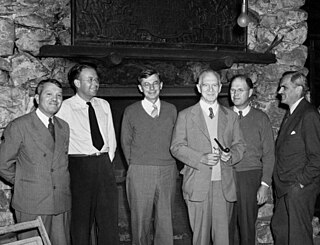
The S-1 Executive Committee laid the groundwork for the Manhattan Project by initiating and coordinating the early research efforts in the United States, and liaising with the Tube Alloys Project in Britain.
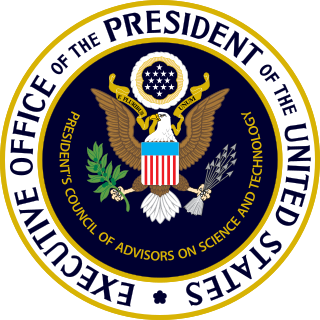
The President's Council of Advisors on Science and Technology (PCAST) is a council, chartered in each administration with a broad mandate to advise the president of the United States on science and technology. The current PCAST was established by Executive Order 13226 on September 30, 2001, by George W. Bush, was re-chartered by Barack Obama's April 21, 2010, Executive Order 13539, by Donald Trump's October 22, 2019, Executive Order 13895, and by Joe Biden's February 1, 2021, Executive Order 14007.
Caryl Parker Haskins (1908–2001) was an American scientist, author, inventor, philanthropist, governmental adviser and pioneering entomologist in the study of ant biology. Along with Franklin S. Cooper, he founded the Haskins Laboratories, a private, non-profit research laboratory, in 1935. He was professor at Union College. He was also on the boards of non-profits such as the Carnegie Institution of Washington and the Smithsonian Institution.
The President's Science Advisory Committee (PSAC) was created on November 21, 1957, by President of the United States Dwight D. Eisenhower, as a direct response to the Soviet launching of the Sputnik 1 and Sputnik 2 satellites. PSAC was an upgrade and move to the White House of the Science Advisory Committee (SAC) established in 1951 by President Harry S. Truman, as part of the Office of Defense Mobilization (ODM). Its purpose was to advise the president on scientific matters in general, and those related to defense issues in particular. Eisenhower appointed James R. Killian as PSAC's first director.
The National Science Advisory Board for Biosecurity (NSABB) is a panel of experts that reports to the Secretary of the United States Department of Health and Human Services. It is tasked with recommending policies on such questions as how to prevent published research in biotechnology from aiding terrorism, without slowing scientific progress.
The United States Air Force Scientific Advisory Board (SAB) is a Federal Advisory Committee that provides independent advice on matters of science and technology relating to the Air Force mission, reporting directly to the Secretary of the Air Force and Chief of Staff of the Air Force. In the past, it has provided advice on technologies such as: supersonic aircraft, weather forecasting, satellite communications, medical research, crewless airplanes, and defenses against aircraft and missiles. Today, the SAB performs in-depth reviews of the Air Force Research Laboratory's science and technology research, and performs studies on topics tasked by the Secretary and Chief of Staff. Members are appointed by the Secretary of Defense.
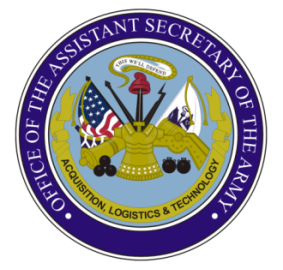
The Office of the United States Assistant Secretary of the Army for Acquisition, Logistics, and Technology (ASA(ALT) pronounced A-salt) is known as OASA(ALT). OASA(ALT) serves, when delegated, as the Army Acquisition Executive, the Senior Procurement Executive, the Science Advisor to the Secretary of the Army, and as the senior research and development official for the Department of the Army. The OASA(ALT) also has the principal responsibility for all Department of the Army matters related to logistics.
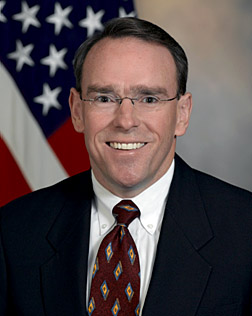
John Jacob Young Jr. was United States Assistant Secretary of the Navy from 2001 to 2005 and Under Secretary of Defense for Acquisition, Technology and Logistics from 2007 to 2009. He is the founder and principal of JY Strategies, LLC.
The Eugene G. Fubini Award is an award by the Defense Science Board, named after Eugene G. Fubini, on an annual basis to recognize an individual from the private sector who has made highly significant contributions to the Department of Defense in an advisory capacity over a sustained period of time.

Ambassador Ronald Frank Lehman II is currently Director of the Center for Global Security Research at the United States Department of Energy's Lawrence Livermore National Laboratory. He is also Chair of the Governing Board of International Science and Technology Center, an intergovernmental organization headquartered in Moscow and is a member of the Department of Defense Threat Reduction Advisory Committee.

Tan Sri Zakri bin Abdul Hamid has had a distinguished career in science as a researcher, educator, administrator and diplomat.
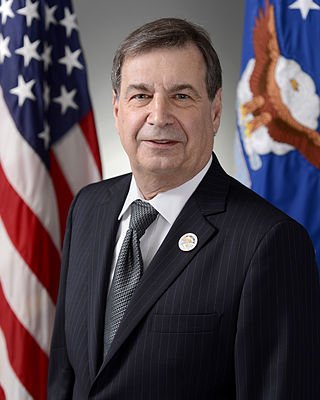
Dr. Greg Zacharias was the Chief Scientist for the Director of Operational Test and Evaluation, Office of the Secretary of Defense, serving from July 2018 to 2021. Previously, he was the Chief Scientist of the United States Air Force from May 2015 to January 2018.
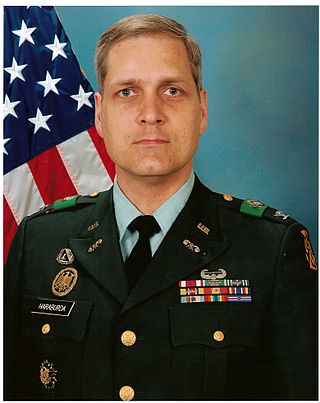
Scott Stanley Haraburda is an American soldier, engineer, inventor, and 2nd dan judoka. In addition to making key contributions to the development of heat exchangers and spacecraft propulsion, he led a team of military officers in 2007 to Kuwait to correct many of the contingency contracting problems identified by the Gansler Commission. He is known nationally as the president of the Indiana Society of Professional Engineers who led the opposition to a state governmental panel recommendation in 2015 to eliminate licensing of engineers in Indiana.
Barry R. Bloom is Harvard University Distinguished Service Professor and Joan L. and Julius H. Jacobson Professor of Public Health in the Department of Immunology and Infectious Diseases and Department of Global Health and Population in the Harvard T.H. Chan School of Public Health in Boston, where he served as dean of the faculty from 1998 through December 31, 2008.

Stephen Joseph Lukasik was an American physicist who served in multiple high-level defense and scientific related positions for advancing the technologies and techniques for national defense and the detection and control of diverse types of weapons of mass destruction, especially nuclear devices. He was the second longest serving Director of DARPA - the Defense Advanced Research Projects Agency – during which numerous new technologies including packet and internet protocols were developed. He was also the first chief scientist of the Federal Communications Commission where he created its Office of Science and Technology and which facilitated the commercial deployment of new technology that included spread spectrum technology.













